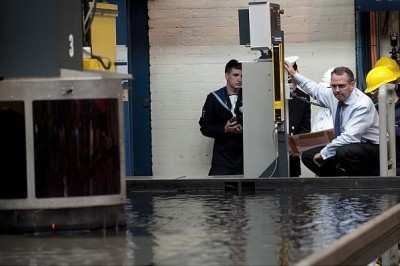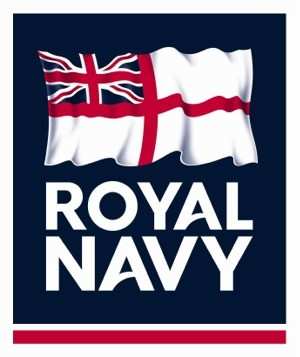Missions Will Range From War Efforts To Humanitarian Aid
Construction of HMS Prince of Wales, the second of the two new
Queen Elizabeth (QE) Class aircraft carriers for the Royal Navy,
started Thursday at BAE Systems' Govan shipyard on the Clyde.
Employees and guests gathered at the shipyard as Secretary of State
for Defence, Dr Liam Fox, was invited to press the button on the
company's plasma machine to cut the first steel for the vessel,
marking a pivotal stage in the program to deliver the nation's
flagships.

First Steel Cut
Dr Fox said: "We are committed to delivering this next
generation of powerful British aircraft carriers that will mark a
step change in our carrier strike capability and form the
cornerstone of the Royal Navy's Future Force 2020. This major
construction project is creating and sustaining thousands of jobs
in shipyards around the country."
Mick Ord, Managing Director of BAE Systems' Surface Ships
business, said: "This is a proud day for our workforce, our
Aircraft Carrier Alliance partners and the thousands of people
throughout the supply chain who are contributing to the delivery of
the Royal Navy's new aircraft carriers. The construction of these
65,000 ton ships is a huge feat of engineering and the rapid
progress we have made, with work starting today on the second
carrier, clearly shows the skills and expertise we have across
British industry."
Second Sea Lord, Vice-Admiral Charles Montgomery, who also
attended the steel cutting ceremony, said: "The Queen Elizabeth
Class will provide Britain with the means to deliver air power from
the sea, wherever and whenever required, and in a stronger and more
decisive form than ever before. In addition they will be able to
undertake a wide range of tasks including support to peace keeping
operations and delivery of humanitarian aid in time of crisis. They
will undoubtedly prove a tremendous asset both to the Royal Navy
and to the UK as a whole."
BAE Systems is a member of the Aircraft Carrier Alliance,
working in partnership with Babcock, Thales and the Ministry of
Defence to deliver the biggest and most powerful surface warships
ever constructed in the UK. Sustaining thousands of skilled jobs
throughout industry, work is well advanced with construction on the
first of class HMS Queen Elizabeth underway at six shipyards across
the country, including BAE Systems in Glasgow and Portsmouth, as
well as Alliance partners at Appledore, Merseyside, Newcastle and
Rosyth, where final assembly will take place.

The company provides overall leadership and program management
to the QE Class program. It also plays a central role in the design
and build of the ships. Construction of the mid and stern sections
of HMS Queen Elizabeth are underway at the company's Govan yard
while the forward and lower stern sections are in build at its
Portsmouth facility. BAE Systems is also set to begin work on the
two island structures for the first ship, which house the bridge
and air traffic control facilities in the coming months.
Additionally, BAE Systems is responsible for the design,
manufacture and integration of the complex mission systems for the
aircraft carriers.
Each aircraft carrier will provide the armed forces with a four
acre military operating base which can be deployed worldwide. The
vessels will be versatile enough to be used for operations ranging
from supporting war efforts to providing humanitarian aid and
disaster relief. The QE Class will be the centre piece of Britain's
military capability and will operate at least 12 of the carrier
variant Joint Strike Fighter jets, allowing for unparalleled
interoperability with allied forces.
 NTSB Prelim: Lee Aviation LLC JA30 SuperStol
NTSB Prelim: Lee Aviation LLC JA30 SuperStol Classic Aero-TV: Curtiss Jenny Build Wows AirVenture Crowds
Classic Aero-TV: Curtiss Jenny Build Wows AirVenture Crowds ANN's Daily Aero-Term (05.30.25): Very High Frequency (VHF)
ANN's Daily Aero-Term (05.30.25): Very High Frequency (VHF) Aero-News: Quote of the Day (05.30.25)
Aero-News: Quote of the Day (05.30.25) ANN's Daily Aero-Term (05.31.25): Microburst
ANN's Daily Aero-Term (05.31.25): Microburst




